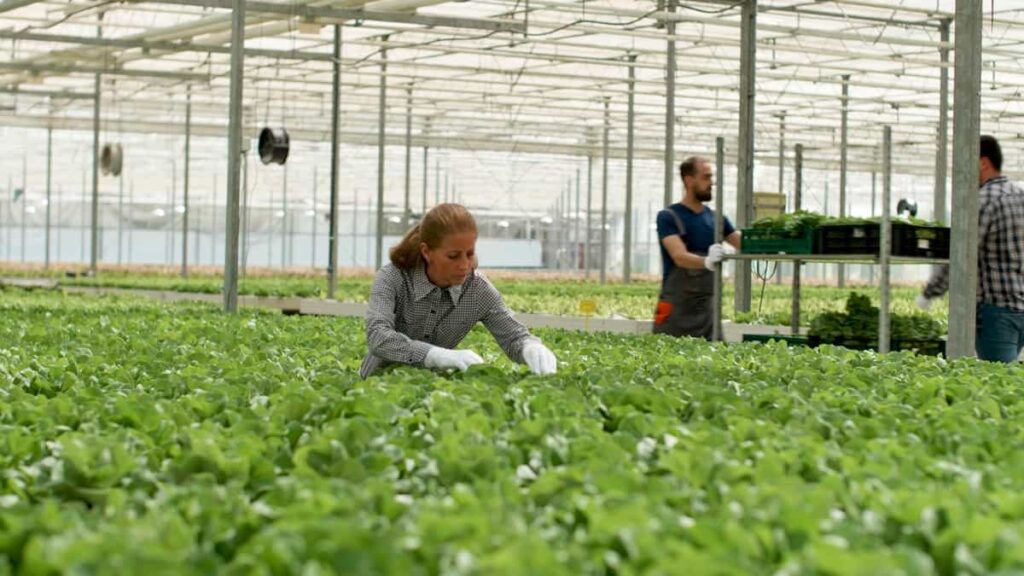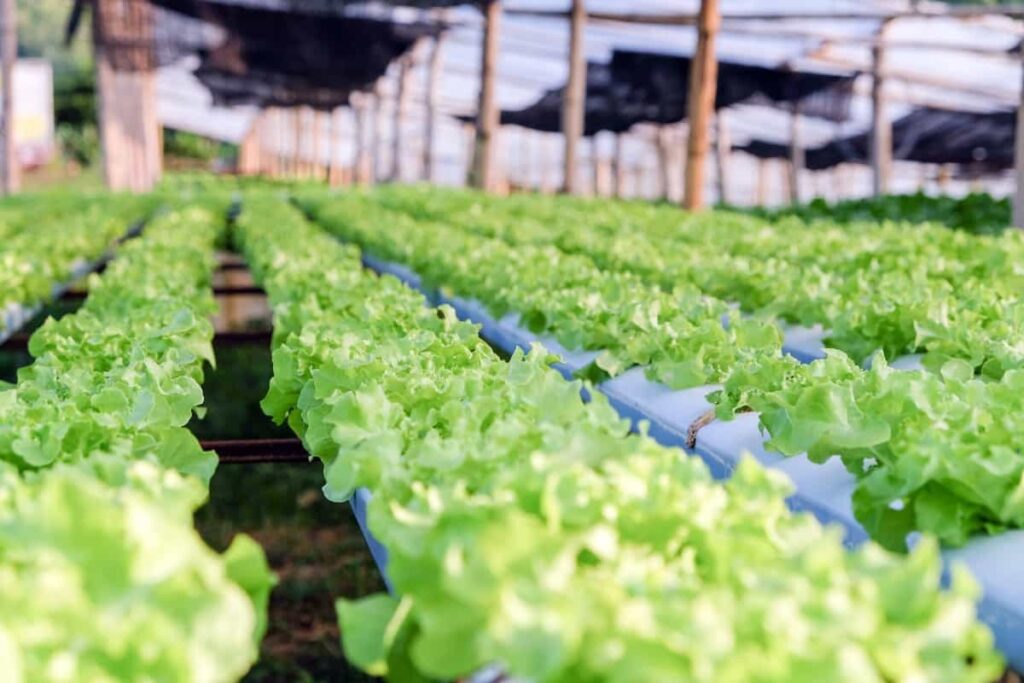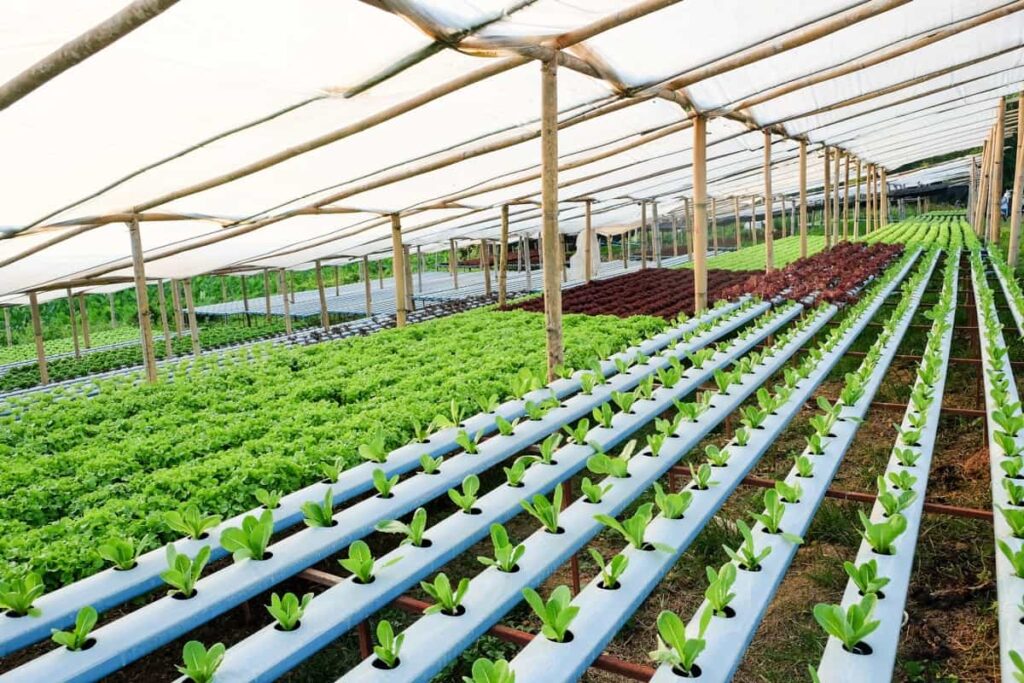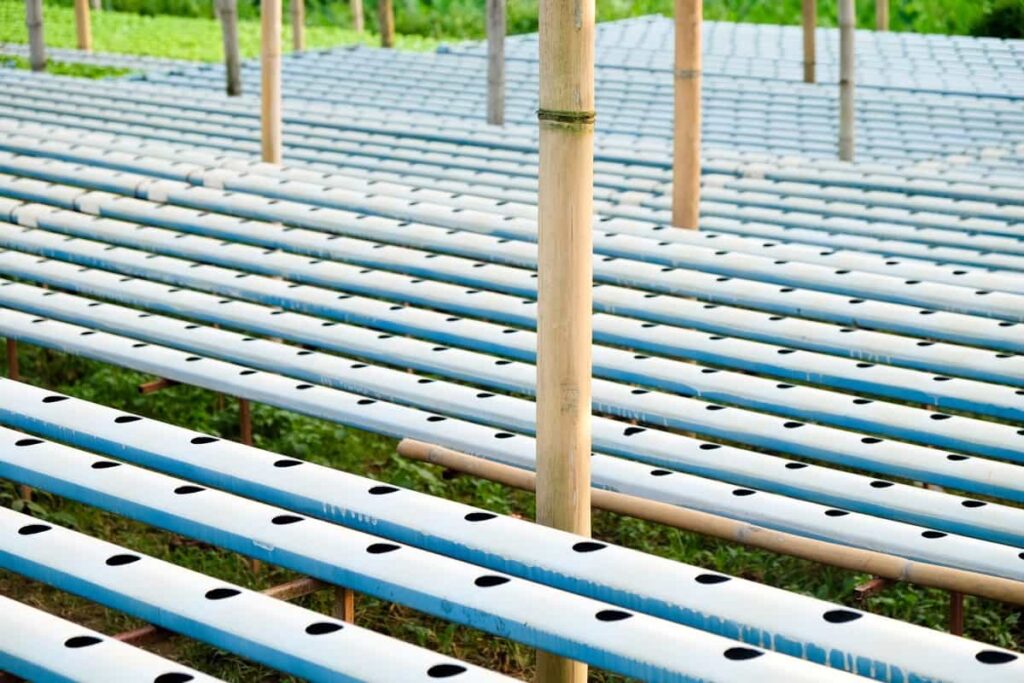Welcome to our blog, where we dive into the fascinating world of hydroponic farming and explore its financial aspects. Are you curious about the costs of setting up and running a hydroponic farm? Are you wondering about the potential profits you can achieve with this innovative farming method? Look no further!

In this comprehensive analysis, we will break down the expenses of hydroponic farming in Kenya, from equipment and supplies to labor and maintenance. Moreover, we’ll examine the potential returns and profitability factors to help you make informed decisions and maximize your success in this thriving industry.
What is Hydroponic Farming?
Hydroponic farming is a soilless cultivation method that allows plants to grow in a nutrient-rich water solution. Instead of traditional soil, plants use various inert growing mediums such as perlite, vermiculite, or coconut coir. This technique offers precise control over the plant’s environment, resulting in optimized growth and increased yields. In hydroponic systems, several key components work together to support plant growth.
These include a reservoir or tank to hold the nutrient solution, a water pump to circulate the solution, and a delivery system such as drip lines or flood trays to supply the solution to the plants. Additionally, an oxygenation system ensures adequate oxygen levels in the root zone. There are different methods of hydroponic farming, including the popular techniques of nutrient film technique (NFT), deep water culture (DWC), and ebb and flow (also known as flood and drain).
Each method has its unique characteristics and suitability for different types of plants. In NFT systems, a thin film of nutrient solution flows through narrow channels, allowing the roots to absorb the necessary nutrients. DWC suspends plant roots directly in the nutrient solution, providing high oxygen levels. Ebb and flow systems periodically flood the growing tray with the nutrient solution, allowing the roots to absorb the nutrients before draining the excess.
In case you missed it: Merino Sheep Farming in Kenya: Raising From Scratch for Breeding to Marketing

Hydroponic farming offers several advantages over traditional soil-based farming, including efficient water usage, faster growth rates, and the ability to grow crops in areas with limited arable land. Hydroponics enables growers to achieve higher yields and control the overall crop quality by providing plants with the optimal balance of nutrients and environmental conditions.
Factors to Consider in Cost and Profit Analysis for Hydroponic Farming Projects
Several factors must be considered when conducting a cost and profit analysis for hydroponic farming projects. Firstly, the initial investment required for setting up a hydroponic farm includes costs for infrastructure, such as greenhouse construction, equipment (grow lights, irrigation systems), and growing medium. Additionally, ongoing expenses involve operational costs like electricity, water, nutrients, and labor.
Yield and profit potential depend on crop selection, market demand, and production efficiency. Government grants and funding options may be available to support hydroponic farming projects, varying by region and specific programs. Risks and challenges such as crop diseases, system failures, and market fluctuations can impact profitability. Comparing costs and profits between hydroponic and traditional soil-based farming is crucial, considering factors like land availability, water usage, and market prices.
Hydroponic Farming Project Report: Cost and Profit Analysis
Several factors need consideration when conducting a cost analysis for a hydroponic farming project. These include the initial investment, encompassing expenses such as infrastructure setup, equipment procurement (e.g., growing systems, lighting, ventilation), nutrient solutions, and selecting suitable crops. Estimating the initial investment required for setting up a hydroponic farm can vary based on factors like the scale of the operation, the chosen technology, and the specific crops being cultivated.
Considering costs for constructing or converting growing spaces, purchasing or building hydroponic systems, acquiring quality seeds or seedlings, and ensuring adequate water and power supply is crucial. Ongoing expenses in hydroponic farming mainly revolve around operational costs. These include lighting and climate control electricity, water supply and filtration systems, nutrient solutions and supplements, pest and disease management, labor costs, and marketing expenses.
In case you missed it: Dorper Sheep Farming in Kenya: Raising From Scratch for Breeding to Marketing

Yields and profits in hydroponic farming ventures can be influenced by various factors, such as crop selection, market demand, production efficiency, and the ability to optimize resource utilization. High-value crops like herbs, leafy greens, and specialty vegetables yield better returns than traditional field crops. Government grants and funding options for hydroponic farming projects vary by region.
Many governments and agricultural organizations recognize the potential of hydroponics and may provide financial support, research grants, or subsidies to encourage adoption and innovation in this field. Key risks and challenges impacting the profitability of a hydroponic farm include crop failures due to disease or nutrient imbalances, fluctuations in market prices and demand, and the need for technical expertise and continuous learning to ensure optimal plant growth.
In comparing the costs and profits of hydroponic farming to traditional soil-based farming, hydroponics generally requires a higher initial investment due to infrastructure and equipment costs. However, hydroponics offers higher yields, faster growth cycles, reduced water consumption, and the ability to grow crops year-round, potentially leading to greater profitability in the long run.
Numerous case studies and success stories highlight the profitability of hydroponic farming. These showcase successful ventures in various settings, such as commercial greenhouses, vertical farms, and community-based initiatives. They provide valuable insights into best practices, crop selection, and business strategies for aspiring hydroponic farmers.
To optimize a hydroponic farm’s profitability, efficient resource management is essential. This involves precise nutrient and water management, implementing advanced climate control systems, optimizing lighting schedules, adopting integrated pest management practices, and exploring potential value-added opportunities like selling directly to local markets or restaurants.
Market trends and consumer demands significantly impact the profitability of hydroponically grown produce. Increasing consumer interest in fresh, pesticide-free, and locally sourced food and the demand for year-round availability of certain crops creates favorable market conditions for hydroponic growers.
Estimating Initial Investment for Setting up a Hydroponic Farm in Kenya
Estimating the initial investment required for setting up a hydroponic farm in Kenya involves considering various factors specific to the region. The costs can vary depending on the scale of the operation, the chosen technology, and the crops grown. On average, setting up a small-scale hydroponic farm in Kenya may require an initial investment ranging from Ksh 500,000 to Ksh 2,000,000.
This includes expenses for constructing or retrofitting a greenhouse, purchasing hydroponic systems, acquiring quality seeds or seedlings, investing in lighting and ventilation equipment, ensuring proper water supply and filtration systems, and installing climate control mechanisms.
In case you missed it: The Rise of Fish Farming in Kenya: Key Rules to Start from Scratch

Ongoing Expenses in Running a Hydroponic Farm in Kenya
Ongoing expenses in running a hydroponic farm in Kenya encompass operational costs. These include electricity for lighting and climate control, maintenance of water supply and filtration systems, nutrient solutions and supplements, labor costs for daily farm operations, pest and disease management, marketing expenses, and potential licensing and certification fees. These expenses vary based on farm size, crop selection, and market demands. On average, monthly operational expenses for a small to medium-sized hydroponic farm in Kenya can range from Ksh 100,000 to Ksh 500,000.
Yields and Profits in Hydroponic Farming Ventures in Kenya
Ongoing expenses in running a hydroponic farm in Kenya encompass operational costs. These include electricity for lighting and climate control, maintenance of water supply and filtration systems, nutrient solutions and supplements, labor costs for daily farm operations, pest and disease management, marketing expenses, and potential licensing and certification fees.
These expenses vary based on farm size, crop selection, and market demands. On average, monthly operational expenses for a small to medium-sized hydroponic farm in Kenya can range from Ksh 100,000 to Ksh 500,000.
Risks and Challenges Affecting Hydroponic Farm Profitability in Kenya
Disease outbreaks in hydroponic systems are a significant risk, necessitating strict hygiene practices and regular monitoring. Optimal nutrient balance is crucial for plant health and productivity, while reliable water supply and efficient management are essential. Energy costs can be significant, but exploring energy-efficient technologies and addressing technical knowledge and skilled labor can help mitigate these issues.
Limited expertise and limited availability of trained personnel can hinder operations, but training programs and collaborations with agricultural institutions can address these challenges. Market fluctuations and competition can impact profitability, so staying informed about trends, consumer preferences, and pricing dynamics is crucial for making informed business decisions and maintaining a competitive edge.
Comparing Costs and Profits: Hydroponic vs. Soil-based Farming
Hydroponic farming offers higher initial investment and lower operational expenses than soil-based farming. It requires infrastructure, equipment, and specialized technology, while soil-based farming relies on traditional land cultivation methods and may have lower setup costs. However, hydroponic farming has higher yields and faster growth cycles, allowing for multiple harvests per year, resulting in increased profitability compared to traditional soil-based farming, which seasonal conditions may limit.
In case you missed it: A Complete Guide to Onion Farming in Kenya: Varieties, Planting, Care, Yield, and Profits

Case Studies and Success Stories of Profitable Hydroponic Farming in Kenya
Case studies and success stories of profitable hydroponic farming in Kenya showcase the viability and potential of this cultivation method. These examples provide valuable insights into successful ventures and highlight the positive impact of hydroponics on agricultural practices and economic development.
Success Farms in Nairobi, Kenya, specializes in high-value crops like lettuce, herbs, and strawberries, achieving impressive yields and consistent quality throughout the year. Hydro Greens in Kisumu, Kenya, focuses on leafy greens using vertical farming systems and controlled environments, maximizing land use and optimizing production. Smart Growers in Naivasha, Kenya, integrates technology and hydroponics, achieving impressive yields and reduced operational costs.
These case studies demonstrate the advantages of hydroponic farming in Kenya, such as higher yields, year-round production, and enhanced crop quality. They also showcase the region’s potential for sustainable agriculture and food security, as hydroponics allows for the efficient use of limited land and water resources. The success of these ventures has inspired other farmers and entrepreneurs to explore hydroponic farming as a profitable and sustainable agricultural practice.
Government and non-governmental organizations have provided support and funding to promote hydroponics to enhance food production and create employment opportunities. In conclusion, real case studies and success stories of hydroponic farming in Kenya demonstrate the transformative potential of this cultivation method, showcasing the positive impact of hydroponics on crop yields, quality, and economic growth.
Project Report of Hydroponic Farming in Kenya: Cost and Profit Analysis
| Cost Components | Initial Investment (KES) | Ongoing Expenses (KES/month) |
| Infrastructure Setup | 200,000 | – |
| Equipment | 350,000 | – |
| Seeds/Seedlings | 50,000 | – |
| Nutrient Solutions | – | 15,000 |
| Electricity | – | 8,000 |
| Labor | – | 20,000 |
| Marketing Expenses | – | 5,000 |
| Total | 600,000 | 48,000 |
| Returns and Profits | Monthly Yield (kg) | Selling Price (KES/kg) | Monthly Revenue (KES) |
| Lettuce | 500 | 80 | 40,000 |
| Tomatoes | 400 | 120 | 48,000 |
| Herbs (Basil, Mint) | 300 | 150 | 45,000 |
| Total | – | – | 133,000 |
Optimizing Hydroponic Farm Profitability through Resource Management in Kenya
Optimizing hydroponic farm profitability requires effective resource management in Kenya, including water usage, nutrient management, lighting, pest and disease management, labor management, automation, and value-added opportunities. Water-saving techniques, nutrient monitoring, and solutions are crucial for reducing water consumption and maximizing profitability.
Proper nutrient solutions and regular testing ensure optimal plant growth and productivity. Lighting systems like LEDs can enhance plant growth while minimizing energy costs. Integrated pest management practices, such as biological controls and beneficial insects, can minimize chemical pesticide use and lower costs.
In case you missed it: How to Start Tomato Farming in Africa: Production Guide for South Africa, Egypt, Nigeria, Kenya, Ethiopia, and Zambia

Labor management, including proper planning, task scheduling, and training, can improve efficiency and reduce costs. Value-added opportunities, such as direct marketing to local markets, restaurants, or community-supported agriculture programs, can enhance profitability by capturing higher margins and establishing a loyal customer base.
Market Trends and Consumer Demands for Hydroponically Grown Produce
Hydroponic farming is gaining popularity due to its appeal and growing popularity among consumers. It offers high-quality, nutrient-rich crops in a controlled environment, producing healthier and more flavorful produce. The demand for year-round availability of certain crops is also a significant driver for hydroponic produce.
Urbanization and limited arable land have led to the need for alternative farming methods, such as hydroponic systems in urban areas. Hydroponics aligns with sustainable agriculture practices and water conservation efforts, attracting environmentally conscious consumers. The growth of e-commerce and online grocery platforms has also contributed to the demand for hydroponically grown produce, as consumers appreciate the shorter supply chain and reduced handling.
Conclusion
The comprehensive project report on hydroponic farming in Kenya provides valuable insights into this innovative cultivation method’s cost and profit analysis. It offers valuable guidance for potential growers aiming to maximize profitability in the Kenyan market.
- Crops Grown in Summer Season: Best Choices for Summer Gardening
- Organic Pest Control for Tomato Farming
- How to Maximize Sheep Farming Profit
- Broccoli Varieties: Choosing the Right Cultivars for Your Farm
- How to Raise Pigs in Your Own Backyard: A Comprehensive Guide
- Budget Friendly Sheep Shed Ideas: Cheap and Low-Cost Tips
- How Much Do Cattle Farmers Make: Revenue Streams in Cattle Farming
- Management Pests and Diseases in Your Cotton Field
- Sheep Farming Business Plan for Beginners
- Aquaponic Farming at Home: A Step-By-Step Guide
- Profitable Village Farming Business Ideas in 2024
- High-Yield Aquaculture: Fast-Growing Fish for Farming
- Effective Fish Pond Construction Techniques for Beginners
- Irrigation and Water Management in Pineapple Farming
- Blossom to Harvest: Mastering Flowering and Pollination in Papaya Farming
- Pig Fattening Essentials: From Selection to Sale for Beginners
- Raising Wagyu Cattle: A Complete Guide for Premium Beef Production
- Soil Types and Their Water Holding Capacity
- Optimizing Irrigation Schedules for Coconut Groves for Enhanced Yield
- Espresso Your Garden: Coffee Grounds for Healthier Acid-Loving Plants
- The Best Soil Mix for Snake Plants: How to Mix Your Own Snake Plant Soil
- Green Thumb Success: Expert Tips for Cultivating Greenhouse Beans All Year Round
- Bloom All Year Round: The Ultimate Guide to Indoor Hyacinth Care
- Eco-Friendly Gardening: How to Make Liquid Fertilizer from Kitchen Waste
- Ultimate Guide to Grow Anise in Pots: Explore Seed Propagation to Harvesting
- Guide to Raising Chester White Pigs: Discover Breed Facts to Growth Management
- Mastering the Elegance: The Ultimate Guide to Weeping Cherry Tree Care, Planting, and Maintenance
- Ultimate Guide to Planting Garlic in Grow Bags: Growing Strategies for Beginners
- How to Fix Spider Plant Leaf-Related Problems: Natural and Organic Remedies
- 10 Reasons Why Your Tulsi Plant is Shedding Leaves: Home Remedies and Solutions
- Optimizing Growth and Yield: The Advantages of Palm Bunch Ash Fertilizer
- Utilizing Neem Oil Extract as a Natural Pesticide for Hydrangea
- From Soil to Harvest: Various Ways in Which Farmers Can Use AI Tools
- Steps to Encourage and Induce Citrus Flowers: A Comprehensive Guide
- How to Fix Snake Plant Leaf-Related Issues: Natural and Organic Remedies
- Transform Your Garden into a Fragrant Oasis with Raat Ki Rani (Night Blooming Jasmine)
